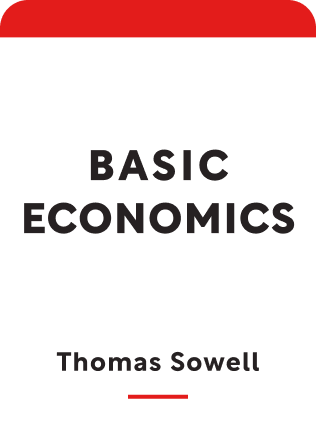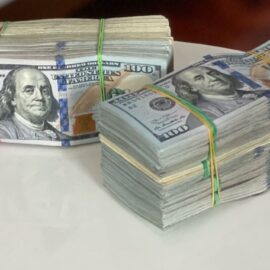

This article is an excerpt from the Shortform book guide to "Basic Economics" by Thomas Sowell. Shortform has the world's best summaries and analyses of books you should be reading.
Like this article? Sign up for a free trial here .
Why do governments enact price controls? How do they determine what the appropriate prices are? And what happens when a good or service is priced either too low or too high?
In economics, price controls are regulations set by governments to ensure goods and services are appropriately priced. When the pricing is mis-optimized, it causes misallocation of resources. The real losses come from the misallocation of scarce resources and a reduction in the total wealth of society.
In this article, you’ll learn when the government intervenes in the pricing of goods and services and the implications of these interventions.
What Is Price Control?
In economics, price control refers to any restrictions imposed by the government to influence the pricing of goods and services. Here are three situations where artificial prices arise: centrally set prices, artificial price ceilings, and artificial price floors.
Centrally Set Prices
In the Soviet Union, prices were set not by supply and demand, but by central planners. However, it has been historically impossible for a central authority to have detailed knowledge across millions of goods, then to set pricing optimally.
In a market economy, individuals with the most knowledge of their situation bid for resources. Prices automatically calibrate to cause resources to flow to their most valued uses. Producers would treat their resources as scarce and valuable, consuming them efficiently.
In the Soviet Union, mis-optimized pricing caused surpluses of some goods and shortages in others. For instance, the state would raise the price of moleskins above what would have arisen naturally in the market, which prompted hunters to get more of them than demanded by consumers, leading to unused pelts rotting in warehouses. Meanwhile, this labor and land use was not used efficiently for a more valuable use, like food, causing food shortages.
This situation also produced bad incentives. In a market economy, producers have natural incentives to use resources efficiently to increase profits and reduce losses. In contrast, in a centrally planned economy, when producers are instead judged based on their output and not efficiency/profitability, they ask for more than they need from the government to meet their quotas. In turn, if government officials give fewer resources than was needed, production could suffer, and officials could be punished, so they tend to over-allocate resources.
Further, market economies have automatic limitations on losses – companies that perform poorly run out of money and go bankrupt, limiting their damage in misuse of resources. But in centrally planned economies, companies that would normally go bankrupt are propped up by the government. Leaders could continue to make the same mistakes indefinitely, with the consequences being a lower standard of living for a nation.
Because the past century has shown the success of market economies, historically central planning-based economies have shifted to market economies and enjoyed the ensuing growth. This has played out often in the 20th century, including in China, India, and South Korea.
(Shortform question: using the growing power of large datasets and AI, could central authorities eventually do a job comparable to markets in pricing goods to allocate resources?)
Artificial Price Ceilings
To popular approval, governments may sometimes cap the maximum price of a good, setting an artificially low price relative to what it would be on the open market. This market distortion leads to unintended consequences.
Rent control is a common example. While popular because it appears to cap the rental price payable by the public, rent control causes a bevy of unintended side effects:
- At lower prices, people demand and consume more, causing a relative shortage of supply.
- People use the supply more wastefully than usual – where a person might otherwise live in a studio, split an apartment with roommates, or live with parents, when prices are low, she might rent a 1-bedroom for herself. Parents who might downsize when their kids go to college may opt to stay in larger housing instead. Turnover is reduced.
- In extreme cases, this can cause hoarding, due to the uncertainty of finding supply in the future. This worsens the shortage of supply.
- People who want housing find themselves unable to secure it and spend more time searching.
- People who have been renting out rooms in their homes may find the artificially low price not worth the hassle, reducing supply.
- Because there is a surplus of buyers, suppliers (landlords) have little incentive to improve quality. This causes deterioration and worse living conditions. In extreme cases, buildings may become abandoned due to insufficient return on investment to fix a property back up to livable standard.
- With artificially reduced profits, builders have less incentive to build houses in that area versus in areas or properties free of rent control (like luxury housing or commercial buildings).
- For all these reasons, homelessness tends to occur at higher rates in cities with rent control.
In summary, what happens under rent control is that the people able to secure housing enjoy lower prices, but supply is artificially constrained, so more people are unable to secure housing.
Shortage vs Scarcity
A bit of a technical note to distinguish shortage from scarcity. A shortage is unsupplied demand. Scarcity occurs when there are fewer goods available to a population.
A shortage can occur without scarcity. This is what happens in rent control. The number of housing units might very well service the population at normal market prices, but artificially low prices under rent control causes a shortage. Then, if price ceilings are removed, the shortage can disappear without more physical supply being created. For example, after World War 2 era rent control in the United States ended, the housing shortage alleviated without more square footage and homes being built.
Conversely, there can be an increased scarcity without a shortage. For example, a fire may wipe out half the houses, causing scarcity. But prices will rise, and, in response, people will reduce their housing expectations and live in smaller homes or share units. Despite the scarcity, a shortage need not occur.
Other Examples of Price Ceilings
- During the oil crisis in the 1970s, the US instituted price ceilings for gasoline. This increased consumption of gasoline and prompted hoarding behavior, where people filled individual gas tanks more than usual. This further exacerbated the shortage of oil, which further pushed hoarding behavior.
- Caps on medical costs can cause people to consume more, seeing doctors for just mild colds.
- In nations with nationalized healthcare (which essentially cap prices), wait times for procedures are often longer than in nations with market-driven healthcare.
- In 2007, Zimbabwe faced massive inflation, which prompted the government to enforce mandatory price cuts. This made it unprofitable to produce goods, leading to mass shortages of supply.
- Price ceilings can create black markets, where prices are often higher than legally permitted prices, and often higher than uncontrolled markets, since the legal risk must be compensated for.
Artificial Price Floors
Prices set above free-market level cause more to be supplied, creating a surplus. Because the prices are higher, demand is lowered, and people consume less.
Artificially high price floors are often done through subsidies.
Example: following the Great Depression, agriculture laws in the US mandated government purchasing of harvest surpluses and restricted the amount of crops that could be grown. Remnants of the laws continue today.
- Artificially higher prices cause more to be produced than the market would demand, even when it would make sense for other areas to produce it.
- Sugar could be produced in the tropics for cheaper than in other areas
- California farmers consume 43% of its water for <2% of state output, when it’d be more efficient to grow in areas of greater rainfall.
- In some years, the federal government bought a quarter of all wheat and took it off the market to maintain prices. Food was destroyed when people were starving!
- Some people don’t have enough money to buy at the artificially high prices.
- Surplus food is sold below cost internationally, driving down local prices in those nations and neutralizing local producers.
- There are even doubly defeating policies – subsidies raise the price of goods that make it unaffordable for the poor, to whom we give food stamps. We’re paying twice for the same inefficiency.
Another notable example of price floors is minimum wage laws and mandatory benefits. These raise the cost of hiring workers, leading to increased use of capital, oversupply of labor, more discrimination against less capable people, and higher unemployment. (We’ll cover minimum wage and its impact on employment in Part III.)

———End of Preview———
Like what you just read? Read the rest of the world's best book summary and analysis of Thomas Sowell's "Basic Economics" at Shortform .
Here's what you'll find in our full Basic Economics summary :
- Why we use money, rather than bartering our services with each other
- Why some nations prosper, while others stay poor despite vast natural resources
- How rent control might actually reduce housing supply and quality






